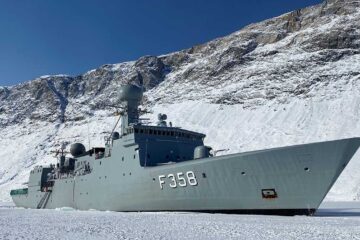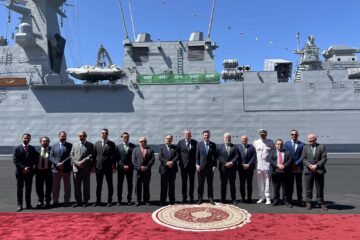Spanish shipbuilder Navantia recently presented the third and last batch of documentation associated with the Preliminary Design Review (PDR) of future F110 frigates, which will be held in May, the Europa Press news agency reports.
The documents have been sent to the F110 Program Office of the Directorate for Armament and Material (DGAM) of the Ministry of Defense, after being endorsed by the Bureau Veritas classification company, which also validated the previous deliveries, which took place in November and December .
Through a statement, Navantia assures that in this way “it meets the deadlines of the execution order and also strictly complies with the plan for the Preliminary Design Review established in June 2020. The next phase will be constructive or detailed engineering.”
The five F110 frigates, planned for construction at the Navantia shipyards in the Ría de Ferrol, are set to replace the F80 Santa María– class frigates, .
This would imply a technological leap in the platform and combat systems, in addition to incorporating Industry 4.0 technologies in its design that will improve the management of the systems throughout their life cycle. The F110s will be the first Navy ships to have a digital twin that will optimize the management of logistics processes throughout the ships’ service phase.
About F110 Frigate

Navantia and the Spanish Ministry of Defense have signed the contract for the construction of five F-110 frigates for the Spanish Navy in April 2019.
F-110 frigates are set to replace the Spanish Navy’s Santa Maria-class frigates which have been in service for over 30 years. F-110 frigates will be fitted with the Aegis combat system integrating a new solid-state S-band radar by Indra. Lockheed Martin and Indra have been collaborating since 2009 to develop a state-of-the-art S-band solid state radar for Spain’s F-110 Frigate Program.
Known as the Bonifaz-class, these frigates will feature:
- A sonar suite by Thales (BlueMaster UMS 4110 and CAPTAS 4 Compact sonars, the TUUM-6 underwater communication system, and the BlueScan digital acoustic system)
- The SCOMBA combat system by Navantia
- The S-band variant of Lockheed Martin’s SPY-7 radar
- Leonardo 127mm 127/64 LW main gun
- Raytheon’s Evolved SeaSparrow Missile (ESSM) Block 2 missile
- Rohde & Schwarz external communications systems
- GMV’ SENDA navigation system
- Propeller systems by Kongsberg Maritime
Indra leads the development within the F110 Program of some of several advanced sensors.






